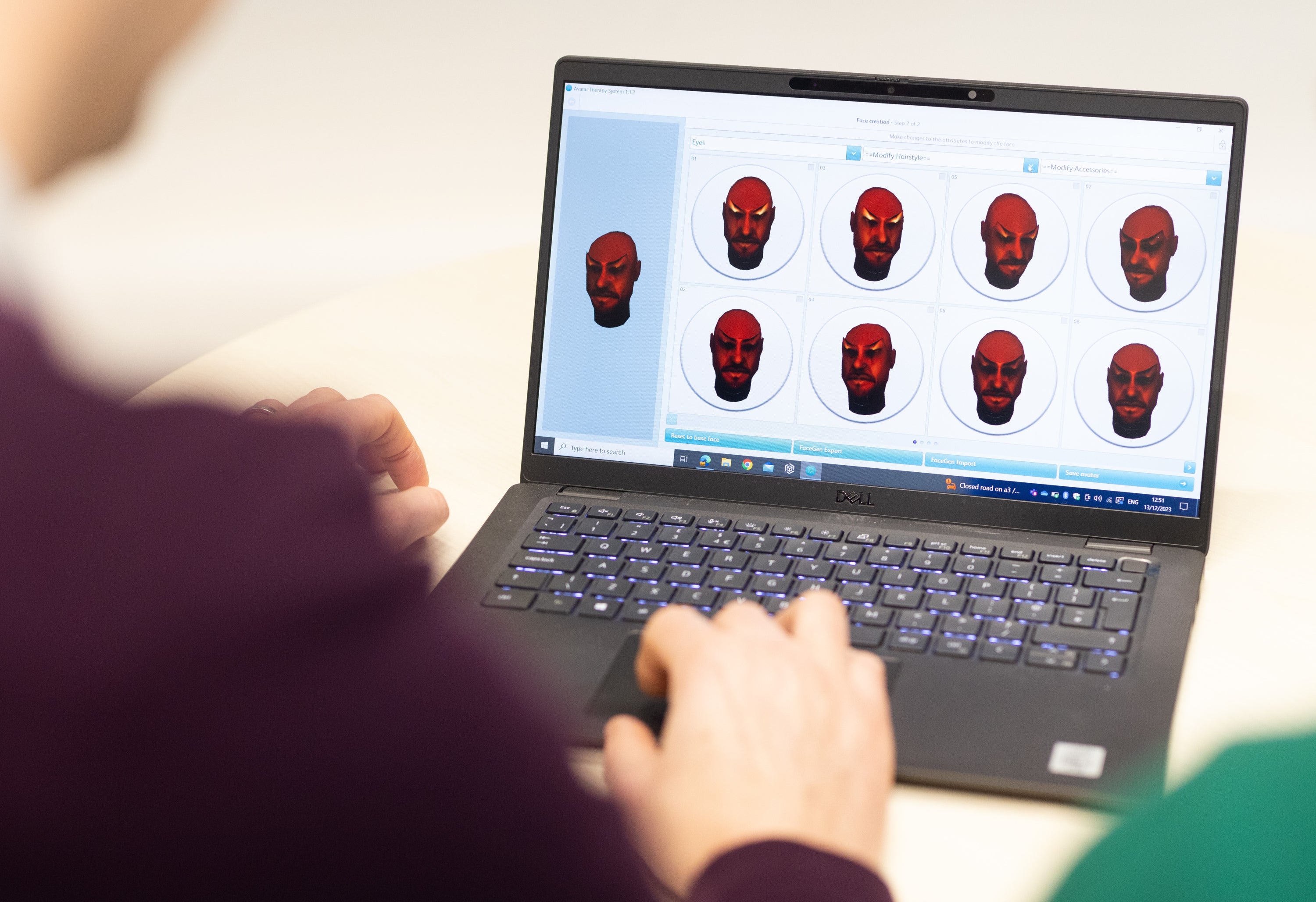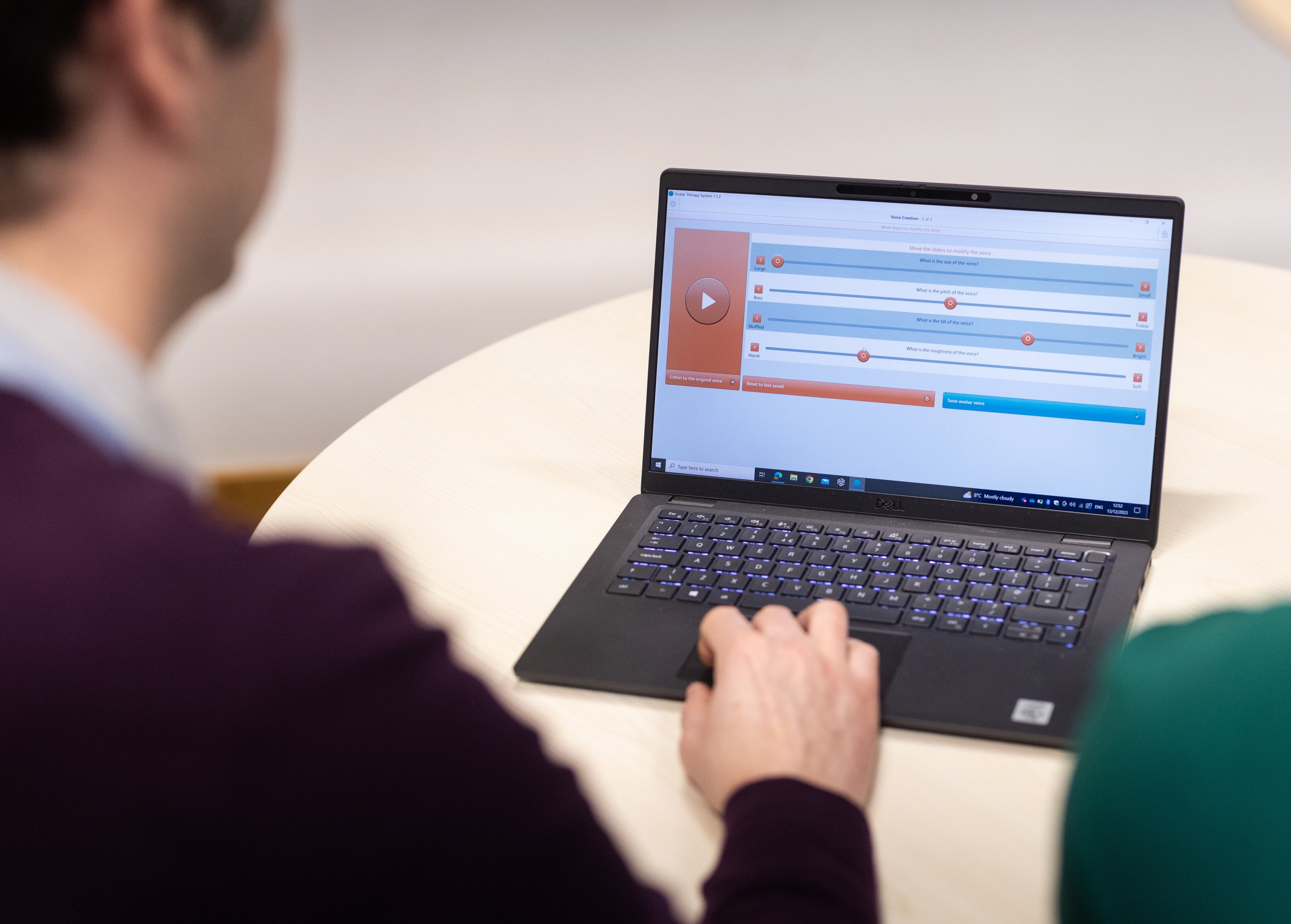Digital characters can help people who hear voices, new research shows
Trialist says it ‘felt like I was taking back control of my life again’ after therapy reduces number of abusive voices he was hearing from between 30 and 40 to four or five

Your support helps us to tell the story
From reproductive rights to climate change to Big Tech, The Independent is on the ground when the story is developing. Whether it's investigating the financials of Elon Musk's pro-Trump PAC or producing our latest documentary, 'The A Word', which shines a light on the American women fighting for reproductive rights, we know how important it is to parse out the facts from the messaging.
At such a critical moment in US history, we need reporters on the ground. Your donation allows us to keep sending journalists to speak to both sides of the story.
The Independent is trusted by Americans across the entire political spectrum. And unlike many other quality news outlets, we choose not to lock Americans out of our reporting and analysis with paywalls. We believe quality journalism should be available to everyone, paid for by those who can afford it.
Your support makes all the difference.Digital characters could help people with psychosis hear voices less often and reduce the distress caused by these voices, new research suggests.
The new therapy involves a series of guided sessions during which patients are able to have a conversation with an animated digital representation of their distressing voice.
Often in psychosis, as in other conditions, the voices people hear can be abusive or bullying and affect people’s day-to-day life.
The voices can be experienced as powerful and almost omniscient, seeming to know what the person is thinking and feeling, and preventing them from taking the steps they want to take in everyday life.
According to the research from the Institute of Psychiatry, Psychology & Neuroscience (IoPPN) at King’s College London, the new avatar therapy using computer-generated animations is an effective way of helping people with psychosis who hear voices.
Philippa Garety, professor emerita of clinical psychology at King’s IoPPN and the study’s lead author, said: “To our knowledge, this is the first therapeutic intervention that has a direct and sustained impact upon the frequency with which people hear voices.
“This is an extremely important finding, as it is a clear priority for voice-hearers, and hearing fewer voices, less often, or voices going away altogether can have a hugely positive impact on their day-to-day lives.
“People who hear voices rarely only hear one. In an interesting development, the extended version of the therapy proved effective at reducing voice frequency in total, despite participants only creating one avatar for one voice.”

Nick, who took part in the Avatar trial, said: “When I had the therapy in 2015, I was hearing up to 30 or 40 abusive voices a day and it brought it down to about four or five.
“I felt like I was taking back control of my life again.”
Before the therapy, patients work with a therapist to create a computerised visual representation of the voice they hear (the avatar).
The session involves a three-way conversation between the voice-hearer, the therapist and the avatar on screen, with the therapist speaking as themselves as well as voicing the avatar using voice conversion software.
The avatar’s likeness and sound is made to match the description provided by the patient.
Over several sessions, participants learn to stand up to the voice and take control.
The researchers recruited 345 people from four centres linked to the Universities of Glasgow, Manchester, UCL and King’s.
They were randomly assigned to receive either Avatar Brief (six sessions of therapy), Avatar Extended (12 sessions of more personalised therapy), or continue with their usual support.
The researchers found that, at the 16-week follow-up, people in both Avatar groups showed significant improvements in voice-related distress, voice severity, empowerment, mood and wellbeing compared with those who did not receive the therapy.
People who received Avatar Extended also saw a reduction in the frequency of distressing voices, the study suggests.
Experts say that, while Avatar’s effects on distress did not differ significantly at the 28-week mark, compared with those receiving their usual support, researchers found that Avatar Extended was an effective means of reducing the frequency of distressing voices.
Miranda Wolpert, director of mental health at Wellcome, which helped fund the study, said: “It is very exciting to see the emergence of a powerful new digital therapy that could be life-changing for people who hear voices.
“This study builds on more than a decade of pioneering research.
“Avatar therapy has been shown to reduce the distress people experience from auditory hallucinations and the frequency with which they hear them.
“This is a striking example of how mental health science can drive forward cutting-edge treatments, providing new ways to intervene early to help improve and resolve symptoms.”
The research, published in Nature Medicine, has been recommended by a National Institute for Health and Care Excellence (Nice) Early Value Assessment, with the researchers now seeking to provide it in routine NHS settings to gather further real-world evidence of effectiveness over the next three years.
Join our commenting forum
Join thought-provoking conversations, follow other Independent readers and see their replies
Comments